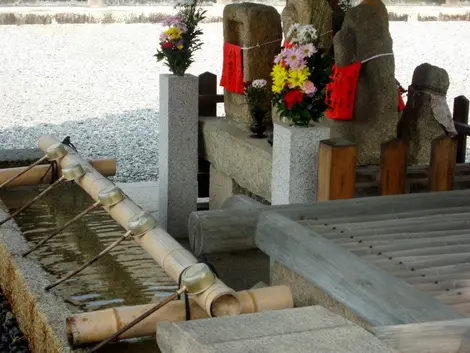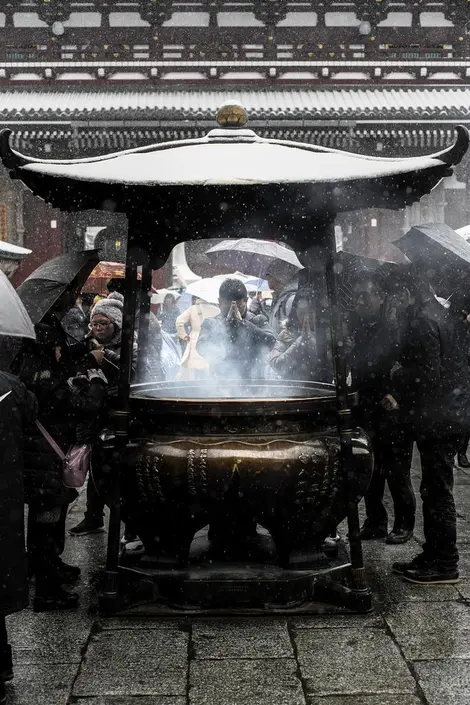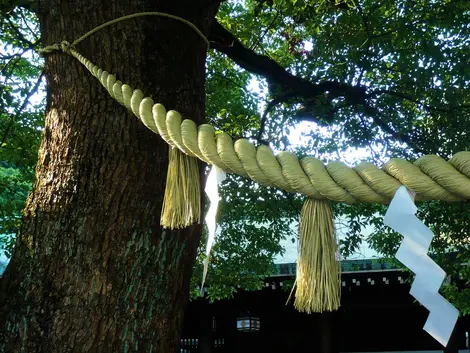Praying in Japan 祈る
Prayer at temples and shrines
Shinto and Buddhism are Japan's two largest religions as their footprints are everywhere you visit. Learn the customs and ritualized gestures observed by the locals!
Shinto shrines are easily recognizable. The entrance is marked by a torii, a large gate, often made of wood, yet sometimes stone, and covered with a bright red color. Arguably the most famous Shinto shrine is in Miyajima. The huge torii's posts get covered in the water when the tide rises at Hiroshima Bay.
In the majority of the sanctuaries, sacred gods are also reflected in the shimenawa, a large braided rope that is placed around a tree or at the shrine's front entrance.
Buddhist temples themselves are characterized by an entrance bigger than a torii, guarded on either side by statues (niô) to ward off evil spirits.
Nothing compares to the massive Buddha at Todaiji in Nara.
Purification
The Shinto torii gate marks the separation between the world of humans to that of the gods. Also, visitors must bow when they walk through the torii. A temizuya, or water fountain, is provided for people to purity. First, wash your right hand, then left, and finally rinse your mouth and release water into the base around the fountain and rinse the spoon.
The time of prayer
In a Shinto shrine, prayer follows a specific pattern. First, place an offering into the big red box at the entrance of the honden, or the main building, and ring the large hanging bell. Bow twice, then clap your hands twice to signal your presence to the local deity. After a moment of silence, bow one last time.
The approach is similar in a Buddhist temple, but don't clap your hands. Incense sticks are usually available at the temple as an offering. Do not hesitate to fan the incense smoke around your head and body as It is believed to have therapeutic and purifying properties.
















